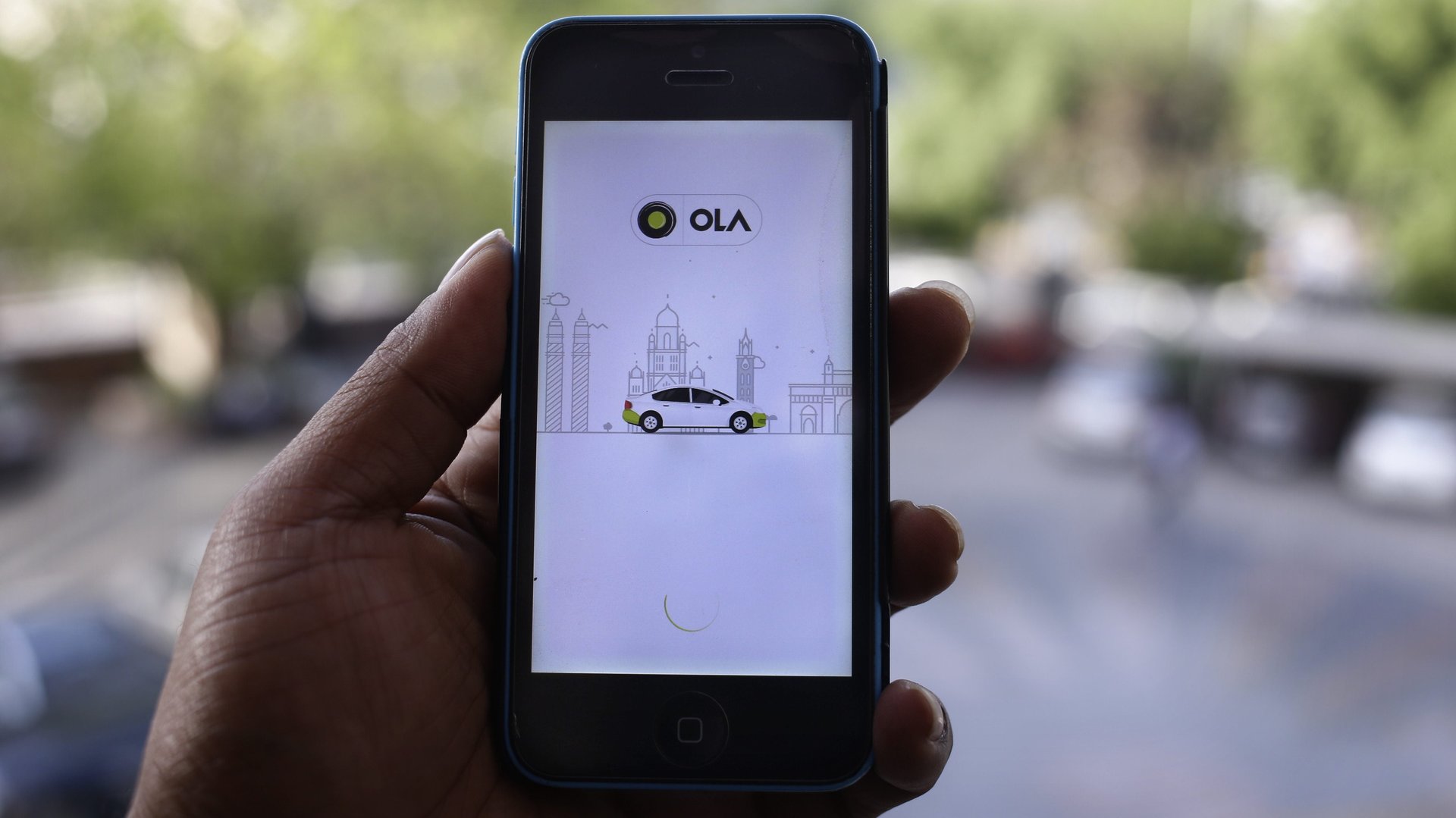Ola is stocking up its war chest in India while Uber struggles with its worst nightmare
Ola has just landed some serious firepower to take on Uber in one of Asia’s most closely fought ride-hailing markets.


Ola has just landed some serious firepower to take on Uber in one of Asia’s most closely fought ride-hailing markets.
Bengaluru-based Ola has raised $400 million (Rs2,612 crore) from Chinese internet giant Tencent, according to a Sept. 20 filing with the registrar of companies.
This is possibly part of a $2 billion funding round that Ola is in the midst of closing, media reports suggested, citing anonymous sources. The company has already raised around $150 million from two US-based hedge funds and $50 million from the UC-RNT Fund of former Tata group chief Ratan Tata in partnership with the University of California’s investment arm. The remaining amount is to come from Japan’s Softbank, the Business Standard newspaper reported. Ola and Softbank declined to comment.
Ola’s valuation after the latest funding round is unclear, but the highest it reached was $5 billion in November 2015.
The timing of this round is critical for Ola as arch rival Uber is now widely expected to splurge in India following its exit from China last year. The San Francisco-based firm has said that it would allocate a “significant portion” of the $1 billion earlier meant to be spent in China to India instead.
With money in the bank, Ola is now ready for Uber.
“It (the funding) creates a formidable competitor for Uber, which can match its deep pockets and has the advantage of understanding the Indian market better than Uber does,” Vivek Wadhwa, a distinguished fellow at Carnegie Mellon University, told Quartz. ”I am betting on Ola.”
Ola was founded by IIT-Bombay alumni Bhavish Aggarwal and Ankit Bhati in 2010, three years before Uber entered the country. While Uber now accepts cash and allows riders to hail rickshaws and bikes from its app, Ola did all of those things first. The latter also offers multiple language on its apps for those who can’t read English.
Meanwhile, Uber faces a leadership crisis globally. Sexual harassment allegations by a former employee have put its corporate culture under scrutiny, driving co-founder and then CEO Travis Kalanick out of office in June. Scandals have erupted in Indonesia, Malaysia, and India involving allegations of bribery, invasion of privacy, and tax evasion.
The company has faced a slew of driver protests in India seeking better pay and working conditions. Uber is also alleged to have obtained the medical records of a woman raped by one of its Indian drivers in 2014, in likely violation of privacy laws. In September this year, UberEats faced criticism for a sexist ad campaign in Bengaluru. Uber did not respond to requests for comment.
The warchest
Ola and Uber have a virtual duopoly in India, capturing nearly 95% of the $10 billion ride-hailing market. Ola operates in over 100 Indian cities, far higher than Uber’s 29.
Their multi-billion dollar battle requires a constant infusion of funds to ensure the supply of cabs, offer discounts, and run marketing campaigns, among other things. One area that Ola may invest in heavily is cabs, experts said. It could “solve the supply-side pressure, which has created the long (waiting times) and (cab) availability issues,” Anil Kumar, CEO of consulting firm Redseer, told Quartz.
Yet, Uber can still give Ola a run for its money—if it decides to.
“If Uber does perceive a threat to market share from this new round of funding for Ola, their new CEO Dara (Khosrowshahi) will simply put in more funds in India to level the playing field,” Anindya Ghose, director of New York University’s Center for Business Analytics, told Quartz. “There is no way Uber will yield additional market share to Ola in India and incur the risk of what happened in China.”